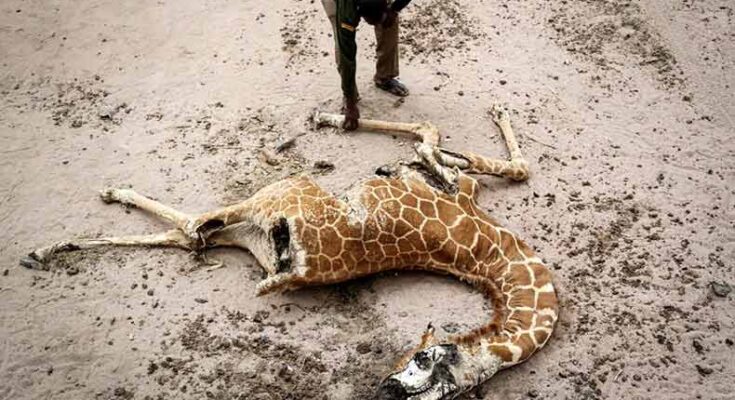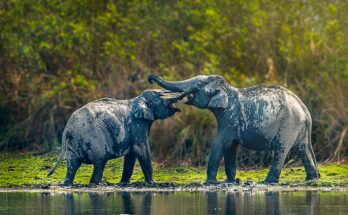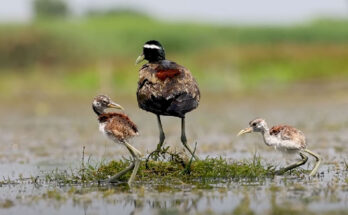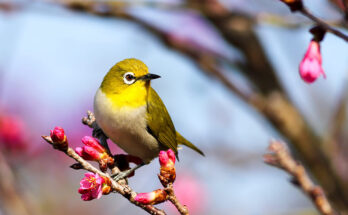Kenya is facing severe drought, wildlife are dying. Image Courtesy – AP News
Severe drought in Kenya devastated hundreds of wildlife that are dying every day due to a lack of food and water. Dead bodies of giraffes, zebras are piled up in the forest. More than one such tragic picture is being published on social media every day.
Recently, pictures of some giraffes lying inside the Sabuli Wildlife Conservancy in Kenya’s Wazir area came to light. The pictures made the animal lovers cry. It was learned that the dead giraffes were photographed on December 10, 2021. They were rescued dead in the same manner.
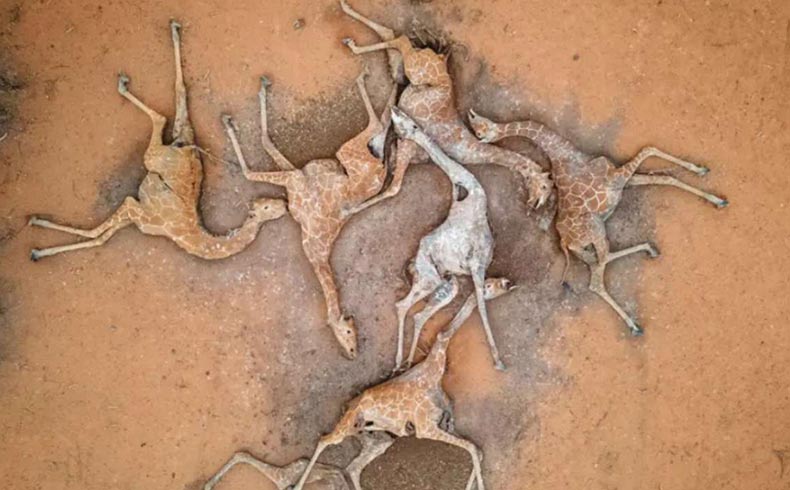
As it was reflected in the picture, the giraffes were weakened by a lack of food and water and were slowly dying. Image Courtesy – DNA India
As it was reflected in the picture, the giraffes were weakened by a lack of food and water and were slowly dying. The photo was shared on social media with the caption, ‘Giraffes were trying to drink water from a nearby dry pond. At that moment, they were stuck in the mud, and they died there.’
The drought in Kenya has brought inestimable damage for the people and animals residing there. Especially, the population of giraffes and zebras is highly affected due to drought.
Read: Mysterious deaths of 350 elephants occurred in Botswana of Africa
Those in charge of wildlife conservation in the area said that all have dried up due to the severe drought. There was no drinking water anywhere. Attempts were made to save the livestock in this situation but no help has been provided to the wildlife. That was the reason for premature animal death.
Rainfall in the larger parts of northern Kenya was less than 30% since September this year. As a result of that, severe drought conditions have occurred in those areas. The situation of wildlife in those areas was affected severely. Carnivorous animals could still be survived by eating other animals. But, herbivorous animals were in tremendous dependency on water and green pasture-land. With the pasturelands gradually decreasing due to the shortage of rainfall, food and water shortage for the herbivorous simultaneously increased. So, malnutrition and dehydration are some of the reasons for the death march of animals, especially giraffes and zebras.
A conservationist of that locality depicted the scenario for the wildlife animals. In his words, the situation there was terrible for the animals. The river basins were occupied by the local people for cultivation. So, wildlife was unable to proceed that way to drink water. Especially, the giraffes and zebras were mostly at risk due to their physical constitution, and they would face more dire situations in the future.
As per the statistical data of the World Meteorological Organization (WMO), the year 2020 has been defined as the third warmest year ever recorded in Africa. They estimated that the temperature could rise by 2.5 degrees Celcius by 2050. According to the experts – every increment of global warming affects largely the extreme weather areas. Generally, a warmer atmosphere can hold more moisture in the air, and as a result that extreme rainfall is expected. But, the situation may also be reversed. More evaporation may bring more intense droughts.

